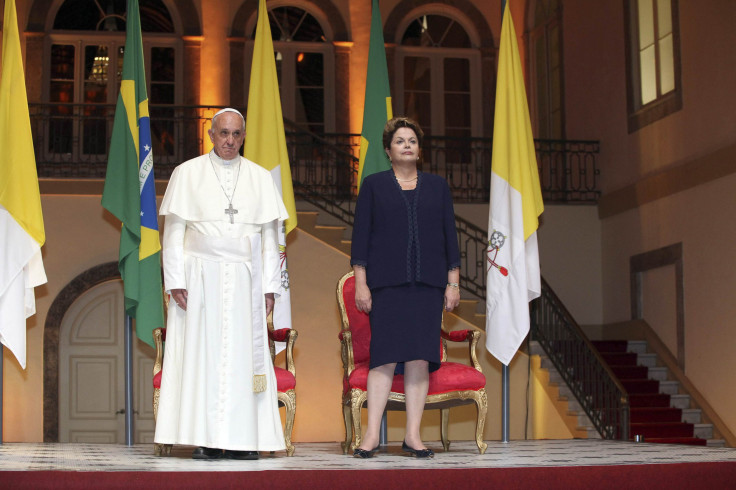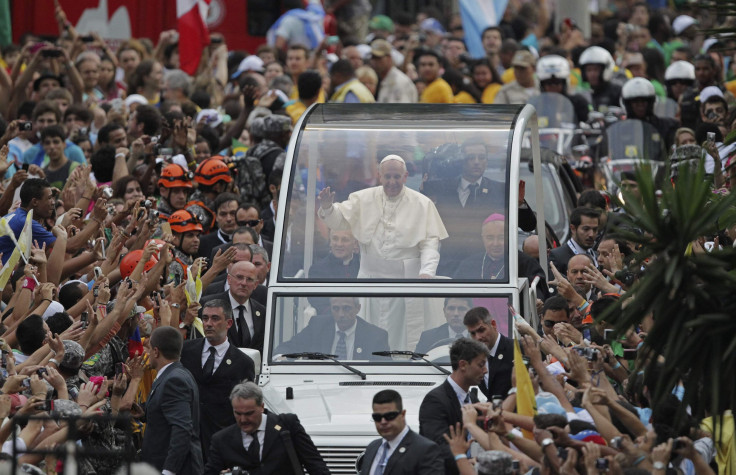Protests In Brazil Restart Over Pope Francis' Visit, Security Measures Bring Tension To Rio De Janeiro
The visit of Pope Francis to Rio de Janeiro, the Holy Father's first trip to his native Latin America and his first visit overseas, had a rocky start on Tuesday morning. The security plans laid out by Brazilian police did not go as smoothly as expected, despite the increase in the planned number of police in the streets -- from 10,000 to 14,000.
The Pope didn't make it any easier. According to Spanish newspaper El País, Francis refused to use the bulletproof popemobile and chose instead a smaller Fiat and only one bodyguard for his journey from the airport to the Guanabara Palace, where he was meeting with President Dilma Rousseff. Furthermore, the driver took a wrong turn and ended in a traffic jam, which enabled a crowd to surround the car and made it impossible to leave the road. The security team had real problems keeping order, and the pope had to leave in a helicopter to make it to the meeting, almost an hour behind schedule.
Police were on the lookout for social unrest, as just last month Brazil had seen one of the biggest popular protests in its history. A group of protesters gathered in front of the Guanabara Palace to protest the $25 million of public funds used to organize and secure the papal visit, and there was a small confrontation with police that resulted in two arrests.
Over a million people turned out to catch a glimpse of the Holy Father, or even get him to touch them or their children. Brazil is the largest Catholic community in the world, with more than 130 million people adherents.




© Copyright IBTimes 2024. All rights reserved.











